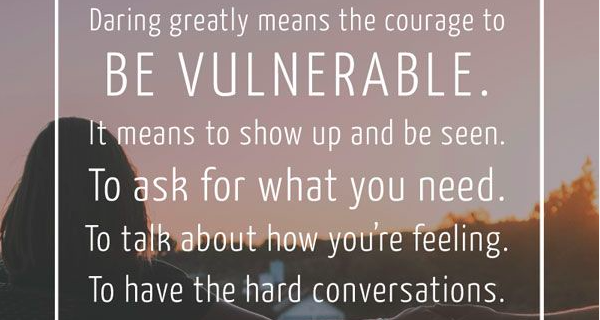
The first portion of the Whole Hearted Living Series was dedicated to the topic of vulnerability and the challenges we all face in allowing others to share in the very thing that connects us and makes us human. Now that you have an understanding of why vulnerability is so vital for connection, it’s important to understand one of the major ways we all cope with the discomfort of our own vulnerability, avoidance. Specifically, avoidance of emotions and our internal experience. It is our internal world that makes us vulnerable; the thoughts, the feelings, the fears, the regrets, etc. Oftentimes, those experiences can be overwhelming, frightening, distressing or perceived as weakness, leading us to push them aside time and again. The concept of experiential avoidance is borrowed from Acceptance and Commitment Therapy, and it refers to the things we do to avoid, escape, and control distress. We all use avoidance strategies to some extent, which can be useful temporarily. However, a general avoidance of our experience tends to decrease both our life satisfaction and overall well-being.
Truth and courage aren’t always comfortable, but they’re never weakness.- Brene Brown
What does experiential avoidance look like?Attempts to get rid of distressing thoughts, feelings, sensations by avoiding, denying, escaping, and trying to control our experience. Essentially, experiential avoidance entails behaviors and ways of thinking that take us out of touch with the present moment. Examples include:
- Rumination & worry
- Being on automatic pilot
- Mental distractions (problem-solving, analyzing)
- Fantasizing/wishing
- Escape behaviors (drugs, alcohol)
- Keeping extremely busy
- Suppressing thoughts
- Denial
- Perfectionism
- Pleasure-seeking
Ok, maybe this is me… so what?
Again, these ways of avoiding or being out of touch with our experience can be adaptive temporary strategies, but the effects of avoidance as a long-term coping skill tend to be far reaching, impacting our relationships, our level of distress, our life satisfaction and ultimately happiness.
- Paradoxically, experiential avoidance can increase distressing thoughts, feelings, sensations. Not only does it take a lot of mental energy to suppress and avoid, but also those experiences we are push away tend to pop up anyway, even if at unexpected times. For my visual learners, imagine you have a pot full of boiling water and you throw in a couple of ping pong balls… in order to keep those ping pong balls from getting out of control you hold them down with your hand with all your might. But if you’ve ever tried this, you know that those ping pong balls can’t be held down and will find a way to pop up through your fingers, especially when you add more and more.
- The specific behaviors can create other problems in functioning, relationships, health, etc. For example, drinking to suppress emotions or constantly needing stimulation can lead to feelings of dissatisfaction and relationship difficulties. Moreover, spending our time and energy engaging in these behaviors detracts from our available energy to put towards positive action that is in line with the goals and values we have for ourselves.
Regardless of the extent to which we avoid, the challenge is rather than avoiding or trying to control what is in our minds, making contact with what we are experiencing in the moment. Feeling into our present experience often involves some aspect of mindfulness to cultivate this skill of observation. We are typically so busy DOING that we hardly ever take the time to notice our state of BEING. This can often be quite scary for people, as some may anticipate that moving into their experience may be emotional or overwhelming. And to an extent, if you are someone who has a habit of avoiding, you may not have built up an ability to tolerate negative emotions. However, slowly allowing yourself to dip in and out of your experience, whether it be your thoughts, feelings or body sensations will slowly build that tolerance to the point where you can tolerate distress in a way that won’t control your life. You must make the distinction for yourself whether you are truly living in accordance with your values and what is important to you or if your decisions are based out of fear; fear of the unknown, fear of not being able to handle the emotional experience, fear of letting your guard down or ultimately, fear of being vulnerable with ourselves. For each of us, it is important to understand the purpose of our emotional/experiential avoidance and acknowledge when it is/has been adaptive and what it’s impact is now.
For some, experiential avoidance is related to poor models at home, lack of coping strategies to deal with difficult/negative experiences and emotions, and for others its roots may lie in shame. An early experience of shame may lead an individual to find criticism, rejection and abandonment in nearly every direction, which can result in chronic anxiety, depression, exhaustion and a struggle for perfection. This type of shame tends to be related to a child’s experience of feeling loved. I will discuss the topic of shame in further detail in part III of the Whole Hearted Living Series.
